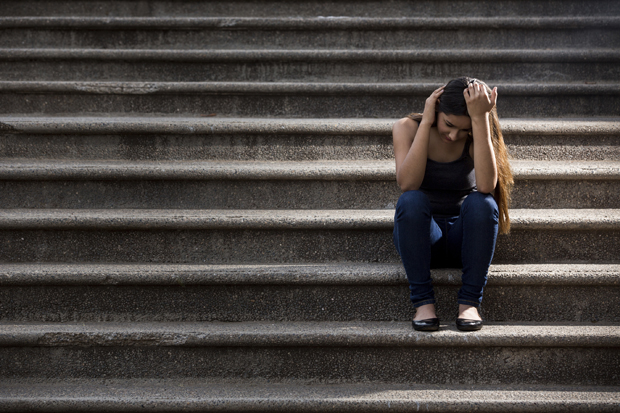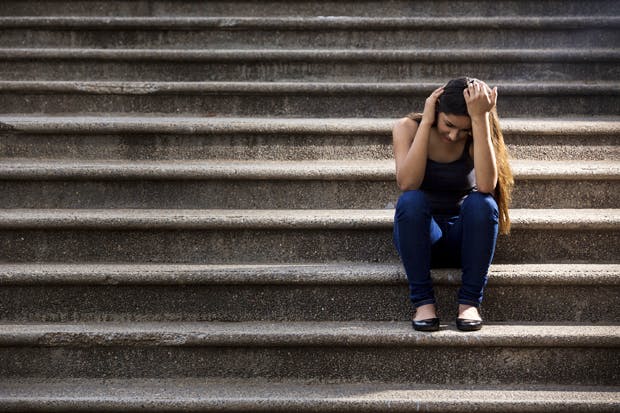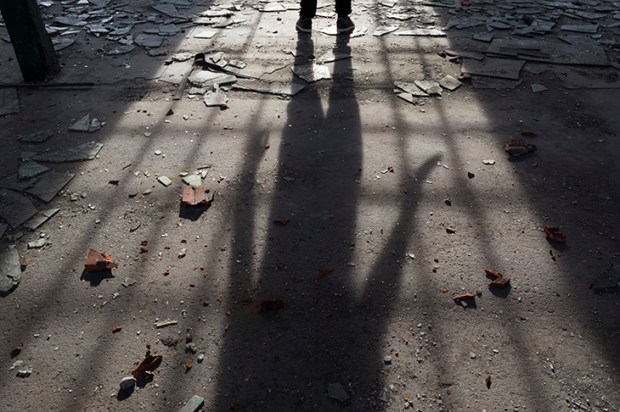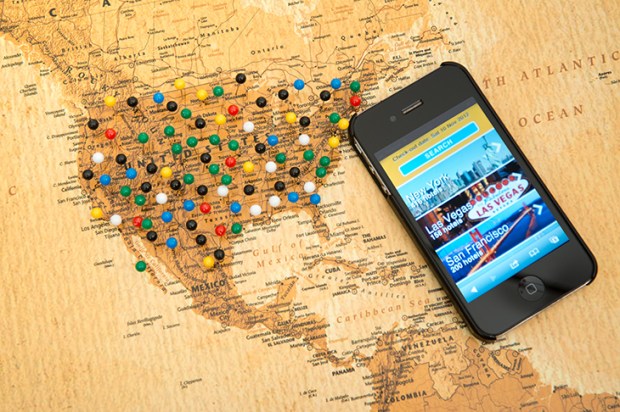Youth is wasted on the young, for the most part, and thank God for that. There’s nothing grislier than a teenage girl aware of her hypnotic effect on men, or a youngster who begins his important thoughts: ‘As a young person, I…’ These days, though, it’s not youth that’s wasted on the young so much as life, which is an altogether more troubling problem.
Over the last year or so, I’d say a good third of the British kids I’ve met, from 15 to 25, have been suffering in some way from anxiety or depression. Often it’s obvious: severe anorexia; forearms calibrated with razor marks. The child says a wan hello, then slinks off to re-submerge in social media. The adults discuss the problem sotto voce. They’re game, modern mums, willing to face mental illness, but they’re baffled too: what’s up with these kids? They’re the best-fed, best–educated, luckiest humans that have ever been. They’re likely to be the longest-lived too, though ironically the least keen on life.
Rachael Dove, a 25-year-old fashion journalist, wrote a moving, exasperating piece in the Telegraph last year calling this the Age of Desperation. Over half of her friends were anxious, she said, some severely and debilitatingly. The lucky few have been referred to therapists, but there’s a year-long wait for talking cures on the NHS. The others were taking selective serotonin reuptake inhibitors (SSRIs) like citalopram, which by all accounts is the new Prozac.
Last week came the depressing news that antidepressant use is at an all-time high in England, and I remembered Rachael and her friends. Last year, 61 million prescriptions were filled for antidepressants, including citalopram. In the last decade, in other words, since Generation Y hit puberty, antidepressant use has doubled.
This won’t come as a total surprise to those of us with a weather eye on Gen Y. They are so easily overwhelmed. Exams? Too stressful. Jobs? All the wrong sort or not well enough paid. In a recent issue of this magazine, Claire Fox dubbed them Generation Snowflake because of their pitiful delicacy. Since her article, Brexit has bought on a mass meltdown of snowflakes, some of whom claim, quite seriously, that they were so upset by the referendum result that, come August, any exam failures should be discounted. I only wish this was an audacious scam.
Fox blames adults for the fragility of the young. We’ve coddled them into insanity, she says. Jean M. Tweyne, author of Generation Me, agrees: kids told that they are special from birth simply can’t cope when the world turns out not to give a hoot.
Rachael Dove — herself an anxious Y-er — thinks the trouble is too much information; too much choice. Her friends, she says, are paralysed by options: hundreds of uni courses, thousands of possible paths through life; too many friends to keep up with, too many perfect beach bodies on Instagram to ever feel comfortable in one’s own skin.
Both theories ring half-true, but there’s something missing. This is a nationwide problem — it bridges the socioeconomic divide. In the poorest areas of the UK, where mollycoddling really can’t be a major problem, one in six people pop SSRIs.
I tend to think it’s normal to be anxious as a teen or an early twentysomething —whatever your choices, whatever generation you belong to. Peer groups are vicious; boys always have and always will judge a girl by her BMI. After puberty, out in the world, existential terror is a reasonable and proportionate response to a sudden awareness that you’re just one of 7 billion humans on a small planet in a vast expanding universe.
Rachael mentions that two of her friends became so terrified that they took themselves to A&E. Well — me too. In my late teens I thought my way into a state of near-constant terror. It began with too much mulling over the meaning of life, gathered pace after an ill-advised acid trip. The fear was itself unbearable so I lived in a nightmarish feedback loop, anxiously examining myself for signs of anxiety, which provoked full-blown panic.
One night in Paris, staying with a university friend, I became convinced my face was paralysed. I ran out of his apartment at 3 a.m. in search of a hospital and ended up in the bright lights of an A&E ambulance bay, crying and begging for help in GSCE set phrases. I remember the ambulance drivers sitting, smoking, unconcerned. ‘See a doctor in the morning,’ one said.
What saved me in end wasn’t medication but a job. Being a gossip columnist should have been unbearably anxious-making — I was shy and a constant mess, in work more suited to a gregarious glamourpuss — but the fact of having to get to the office to file stories put a spanner in the cogs of fear.
So what worries me about these desperate teens isn’t that they’re freaked out — that’s normal — but that they can’t seem to shake off the terror. And here I think the internet might be to blame. It’s good not to feel alone — but what’s different about Y-ers is that they can, and do, seek out and hang out with like-minded mopers round the clock, and if your friends are united by anxiety, you’ve got no choice but to stay anxious or lose them.
I’ve heard kids listing their mental illnesses in the same bored, confident voice they use to order artisan coffee: ‘I have borderline personality disorder, a touch of narcissism, light OCD. They put me on citalopram. You?’
Citalopram. Far from being a cure, I suspect it of being another anxiety trap — acting as those chatrooms do, to prevent angst evaporating from this generation in the normal way. Though big pharma says otherwise, the therapeutic effect of SSRIs has been disputed, though it has been proved that they increase the risk of suicidal thoughts in some children. Some 61 million prescriptions a year, and no effect except to make things worse for kids. Why are they doled out? Perhaps because doctors don’t know what else to do. It gets a whingeing patient out of the way, and no harm done, right? Except perhaps there is. As in the dark ages, so in these enlightened times: maybe it’s the remedy that is the real disease.
The post What’s to blame for a generation’s desperation? appeared first on The Spectator.
Got something to add? Join the discussion and comment below.
Get 10 issues for just $10
Subscribe to The Spectator Australia today for the next 10 magazine issues, plus full online access, for just $10.
You might disagree with half of it, but you’ll enjoy reading all of it. Try your first month for free, then just $2 a week for the remainder of your first year.















Comments
Don't miss out
Join the conversation with other Spectator Australia readers. Subscribe to leave a comment.
SUBSCRIBEAlready a subscriber? Log in